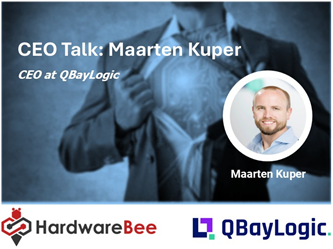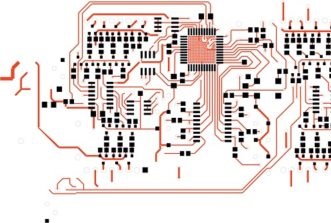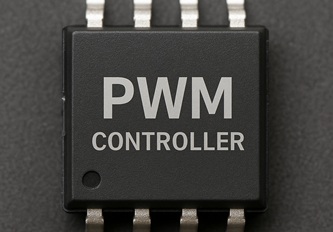This website uses cookies so that we can provide you with the best user experience possible. Cookie information is stored in your browser and performs functions such as recognising you when you return to our website and helping our team to understand which sections of the website you find most interesting and useful.
5 Fundamental Rules of Outsourcing Embedded Software Projects
12/04/2018, hardwarebee
mbedded software is becoming omnipresent across multiple industries as the driving technology behind consumer applications. Almost every modern device comes with an embedded software system. Global Market Insights estimate that Embedded Software Market will reach USD 18.61 billion by 2023. One of the main reasons for increased adoption of embedded software is its use by electronics companies for increased functionality, improved quality and reusability. However, the ever growing product complexity and rapid development of digital technologies are increasing the cost of embedded software development. That is why many companies explore the opportunity of outsourcing embedded software projects to cut costs while improving quality and time to market. We’ve provided embedded software development services for over a decade and understand how challenging it might be to find qualified embedded software engineers and how important it is to establish good communication in the team. In this article, we share some of the lessons we’ve learned to help you drive maximum value from outsourcing your embedded software project.
1.Examine the expertise and experience of your outsourcing provider
A reliable embedded software outsourcing provider should have a solid portfolio and experience in using various embedded platforms and operating systems. Additionally, either an offshore or nearshore vendor should be able to cover all aspects of embedded software development including real-time signal processing and big data. Another plus would be experience in delivering high-tech and IoT projects involving embedded software development.
It’s worth mentioning that the outsourcing company with expertise in multiple industries and domains is more likely to offer transformative solutions and drive innovation on your project. For instance, N-iX provides a rich array of embedded outsourcing services including firmware development, products SDK development and maintenance, integration with third-party technologies, technical support, etc. The company also develops embedded solutions for consumer electronics, industrial automation, and wearables.Among other projects, the IT provider has developed embedded software for a digital pen manufacturer Anoto. The solution is used in healthcare, pharmaceuticals, education, financial services, logistics to eliminate the need for manual data entry and provide almost instant information to clients. Therefore, the projects that demonstrate practical experience of a provider in embedded software development should be a decisive factor in your choice.
2. Analyze the technical stack of your remote embedded team
Needless to say that the necessary tech stack of embedded software engineers varies depending on the product complexity and specific project requirements. Nevertheless, experience in working with common operating systems such as Embedded Linux and RTOS is essential for handling embedded projects. Moreover, when working with embedded software, any qualified developer should possess advanced knowledge of C or C++. In addition, embedded developers need to be able to work with algorithms, data structures, control systems, hardware design language, perform numerical calculations etc. Some projects may also require the knowledge of Eclipse, JTAG, or Python. Qualified embedded software developers should be familiar with different architectures of embedded systems such as interrupt driven/background loop processing, background schedulers, real-time operating systems etc. Therefore, any established outsourcing provider should be able to gather a team that will possess all the skills and technological expertise necessary to implement your project.
3. Choose specialists with solid understanding of hardware requirements and capabilities
The major task of any embedded software engineer is to exploit the possibilities of the hardware to bring maximum benefit for the end-user. Hence these professionals must understand the hardware they work with. Embedded projects can demand different computing or data processing power, memory size, hard disk or solid state disk (SSD) capacity, etc. depending on where and how they are used. A qualified embedded outsourcing partner should have profound knowledge of computing technology to help you optimize a target system, providing the ideal configuration of form factors, CPU, memory, storage, and I/Os. The outsourcing company should not only be capable of recommending the right embedded computing solutions but also utilize latest processor technologies to deliver innovative solutions for advanced projects. Firmware engineers who have strong background knowledge both in software and hardware become a valuable asset for any company.
4. Use Agile development strategies for maximizing project efficiency
Long development cycles, late delivery, unpredictable schedules, poor quality, and developer burnout are some of the most common issues on the project. Agile practices are believed to accelerate the product development lifecycle helping you overcome the inherent constraints of embedded software development. Agile differs from traditional linear product development models since it uses a highly adaptive and iterative development cycle based on a collaborative approach. Still some companies find it hard to envision the practical application of Agile for combined hardware and software development. Nevertheless, our embedded development team has successfully implemented Agile practices across all of our projects and is well-aware of the benefits this approach offers. However, it’s essential to define the methodology, team structures, tools, practices, and metrics to establish an efficient agile-based operating model. This includes creating a baseline map of the existing environment and product architecture. For instance, Agile may be effective in terms of implementing hardware milestone-driven release plans to define software releases.
Since most embedded environments require system testing, it’s essential to implement system test activities in a form of agile iterations, with teams of testers executing functional, scalability and other system-level testing. Additionally, working towards the decoupling of the product architecture will improve the ability to change, build, and test specific architectural layers or product components more easily. As a result, you will achieve steady-state program performance targets and deliver everything at a desired pace. It may also bring such benefits as early customer engagement, continuous testing, and early program risk visibility. Whether your project is hardware/software-focused or hybrid, introducing Agile practices to your development processes is definitely an effective strategy.

Source: Accelerating embedded software development by PWC
5. Don’t underestimate the importance of flexibility
When outsourcing embedded software projects, hiring developers who are flexible and can adapt to changes as quickly as possible is a great business move. Embedded software development requires engineers to possess different skills depending on the hardware characteristics. For instance, they may need to do a concept-proof prototype in just a few weeks in a language they’ve never used before or to start working on a legacy project to fix a bug very quickly. So it’s also important to know about software architecture concepts, event-driven systems and modeling (UML) too. This knowledge accompanied with flexibility helps in developing quality firmware from the ground-up.
To sum up, outsourced embedded software and hardware development services bring competitive advantages when done right. The most essential part is to find the provider that has enough capacities to gather a team of the best firmware developers. In this case, outsourcing embedded software projects offers a number of benefits such as access to the best specialists, better project scalability, and a more predictable bottom line.
______________________________________________________________________________
This is a guest post by N-iX. N-iX is an Eastern European provider of software development services with 800+ expert software engineers onboard that power innovative technology businesses.










